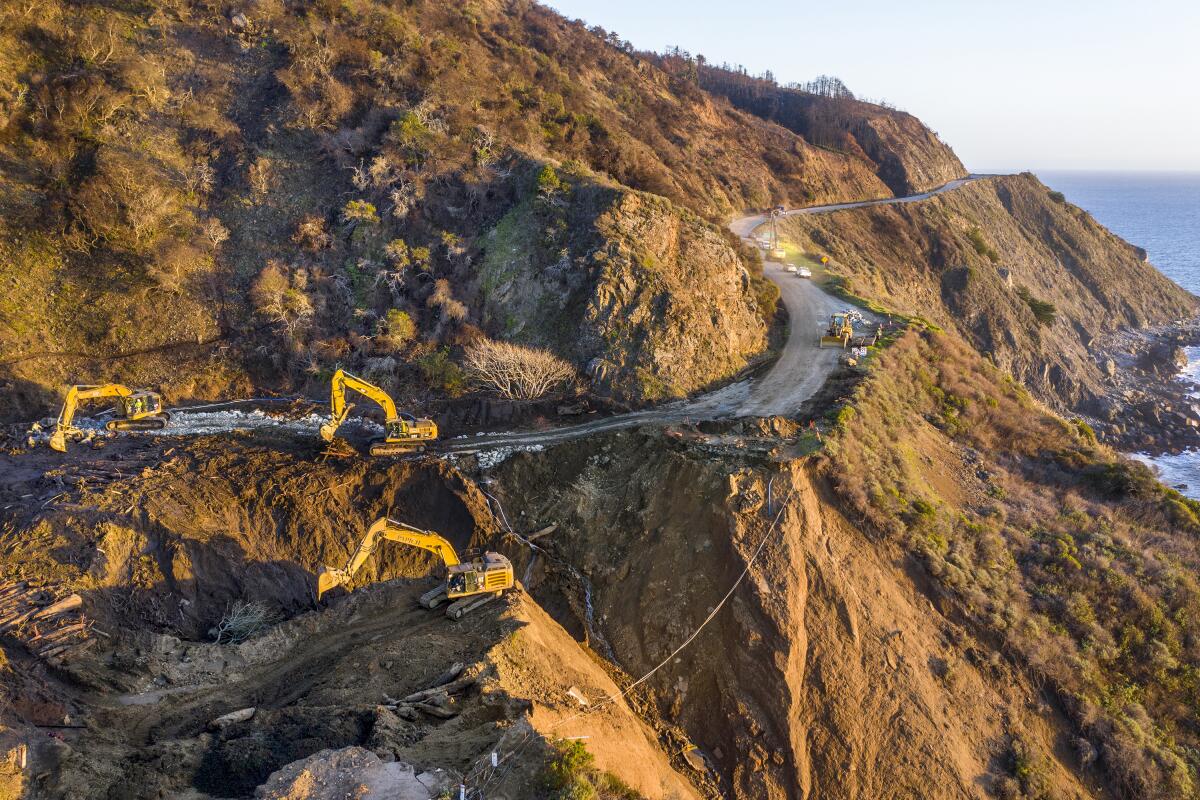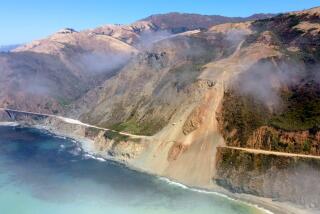California’s Highway 1 near Big Sur reopens after collapse

- Share via
A section of California’s scenic Highway 1 near Big Sur that collapsed during a winter storm reopened to traffic Friday.
Gov. Gavin Newsom and work crews stood on the freshly paved and marked roadway to celebrate the reopening of the main artery to and from Big Sur, which attracts millions of tourists who visit the famous coastal region each year.
“There are few, if any, more iconic routes than Highway 1 — not just in California but anywhere in the world. What this road means to the local economy, to the people of this region and to all Californians is invaluable,” Newsom said. “As we rebuild, we do so with the knowledge that the conditions that washed out this section of roadway will become more common in the future. We must fortify our infrastructure with climate resiliency in mind.”
The slide occurred about two miles south of Big Sur’s Esalen Institute, blocking northbound coastal travelers from such Central Coast sites as Julia Pfeiffer Burns State Park, Nepenthe restaurant and Big Sur Campground & Cabins.
The highway has been closed since Jan. 28, when heavy rain unleashed torrents of mud and debris left over from a wildfire, washing a 150-foot chunk of roadway into the sea.
Storms in 2017 caused slides that closed off Big Sur for more than a year.
This time, crews began to fill the canyon below with compacted dirt in early March. They worked nearly 12-hour shifts, seven days a week, and were able to restore the roadway nearly two months ahead of schedule, aided by dry weather and increasingly longer days, the California Department of Transportation said.
After its reopening, crews will replace the main drainage system above the fixed roadway to help withstand future debris flows, rising sea levels and coastal erosion, Caltrans said. They will also work on landscaping and installing guardrails throughout the early summer.
The work was estimated to cost $11.5 million, the agency said.
More to Read
Sign up for Essential California
The most important California stories and recommendations in your inbox every morning.
You may occasionally receive promotional content from the Los Angeles Times.










